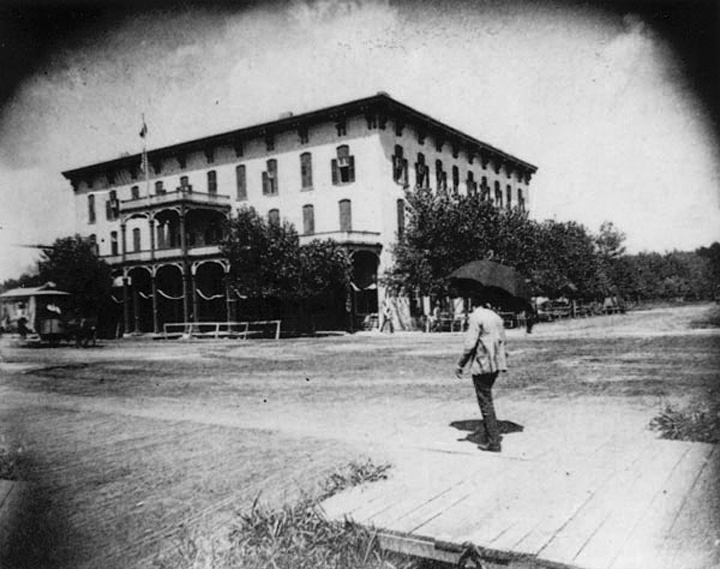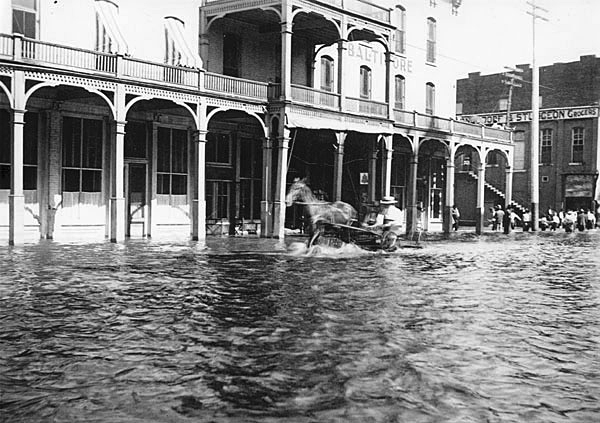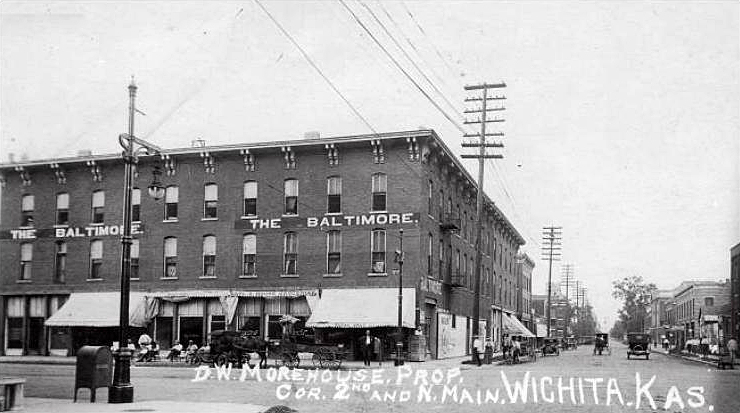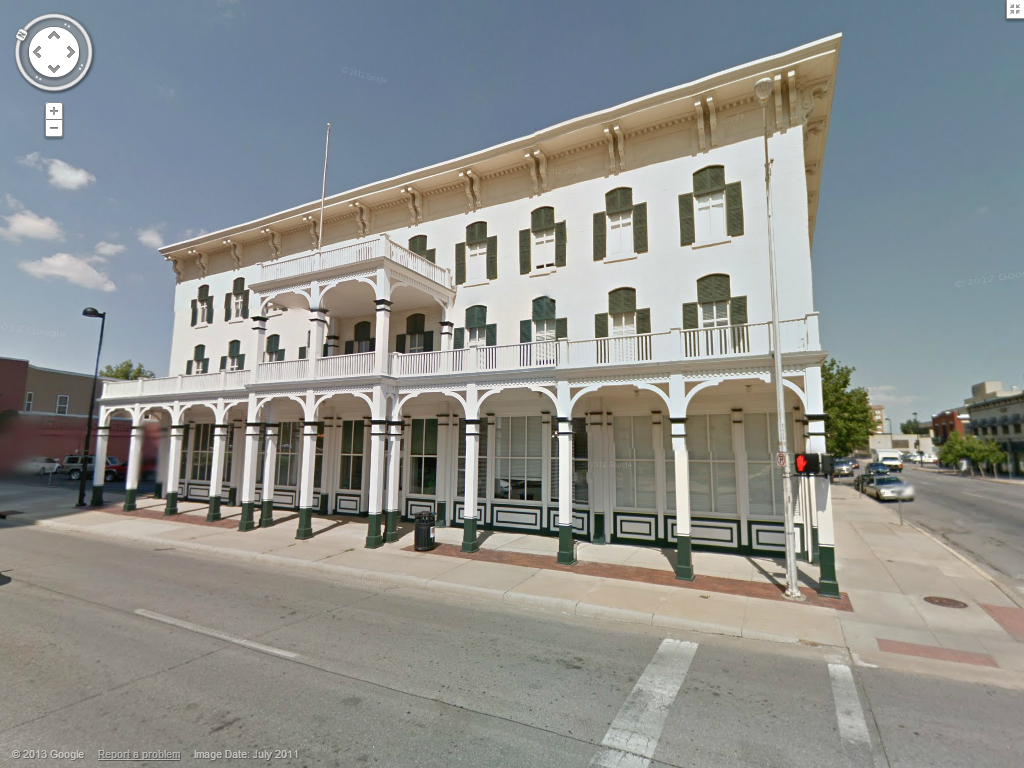WICHITARCHAEOLOGY by Michael Carmody

The Occidental Hotel:
A More Truly Epic Center
Chances are you have driven past the Occidental Hotel countless times without ever really looking at or thinking about it. The Italianate brick building on the northeast corner of Main & Second Streets, despite its unusual prettiness, somehow maintains a sense of demure elegance without calling attention to itself. Yet at the time of its grand opening in January, 1874, it was not only the most spectacular building in the city of Wichita, but held its own against any of the finest hotels west of the Mississippi.
Built for the princely sum of $35,000, the Occidental was the first brick commercial building in Wichita, and no expense was spared in its conception or its execution. Every room was furnished with the finest fixtures. There was a hydraulic elevator (considered at the time a miracle of modern engineering), a saloon stocked with upmarket wines and spirits, a post office, barber and beauty shop and even a telegraph station. The dining room walls were covered with beautiful hand-painted murals, and each table was famously dressed with white linens, crystal drinking vessels and silverware balanced carefully over the dinner plates. The hotel's restaurant boasted an all-black staff (known at the time as the "colored brigade") whose reputation for culinary excellence and world-class service was known far and wide. The Occidental was the undisputed jewel in the city's crown, and it drew the famous and fortunate from all points on the compass.

Bear in mind that the city of Wichita had only been incorporated for three years at the commencement of construction; there were no paved roads, drainage works, sidewalks (though boardwalks would soon appear), electrical or gas service, running water or sewer system. The city's first railroad line, a spur of the Atchison, Topeka & Santa Fe running from Newton, had only arrived the year before, and was used at the time as much for hauling cattle away from Wichita as for hauling goods and people to it. Building such a palatial lodging house as the Occidental must have seemed a tremendous gamble.
And yet it paid off. In its first years, starting with its grand opening gala, the Occidental hosted many grand balls and other highfalutin events; tickets to these cost five dollars per couple, which in today's money is over one hundred dollars. Many nights all 62 rooms were booked and the shows were standing-room-only spectacles.
New owners took over a few years later and made even more impressive improvements. The halls were lined with luxurious wall-to-wall carpeting of the highest quality. A grand piano, considered by many to be the finest musical instrument in the state of Kansas, was brought in at great expense ($1400, or $31,000 in today's figures) and to great public acclaim. Electric lights, steam heat, new furnishings (including marble-topped dresser stands in the guest rooms) and more were added.

Through the 1880s and 1890s, Wichita saw a dizzying boom-and-bust economic cycle, and the Occidental went through a number of ownership and management changes. New railroads came to town, but their depots were located along Douglas to the south and east of the hotel. The Carey House (later renamed the Hotel Eaton) and other more modern facilities were built closer to the rail lines, and the Occidental's fortunes fell flat. In 1899 it was renamed the Baltimore and began to lose its luster. It survived several serious floods, two world wars and the horrors of mid-century "urban renewal" before finally going out of business in 1975.

After five years sitting dormant, the Occidental was completely renovated and repurposed into office and commercial space; more than 30 years later it still serves 16 tenants ranging from the Leukemia and Lymphoma Society to the Garden Grill restaurant. Now known as Occidental Plaza, it is listed on three historic registers (the Wichita Register of Historic Places, the Register of Historic Kansas Places and the National Register of Historic Places) and remains the sole surviving building from the "Cowtown" era of Wichita's founding.
Next time you happen to be driving by the corner of Main & Second, avert your gaze from the gleaming phallus of the Epic Center and rest it instead on the stately, august Occidental, with its tasteful piazza, handsome livery and air of quiet dignity. The juxtaposition of these two vastly dissimilar buildings, given a modicum of scrutiny, is quite staggering.